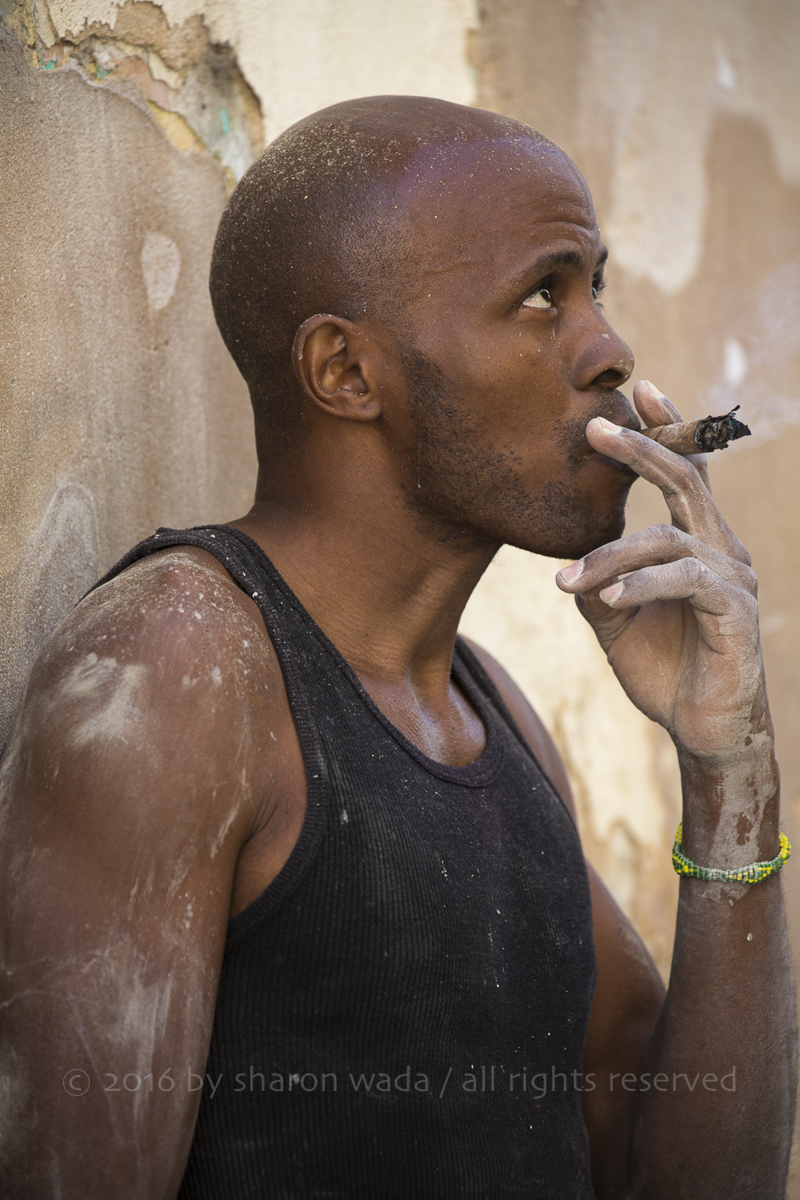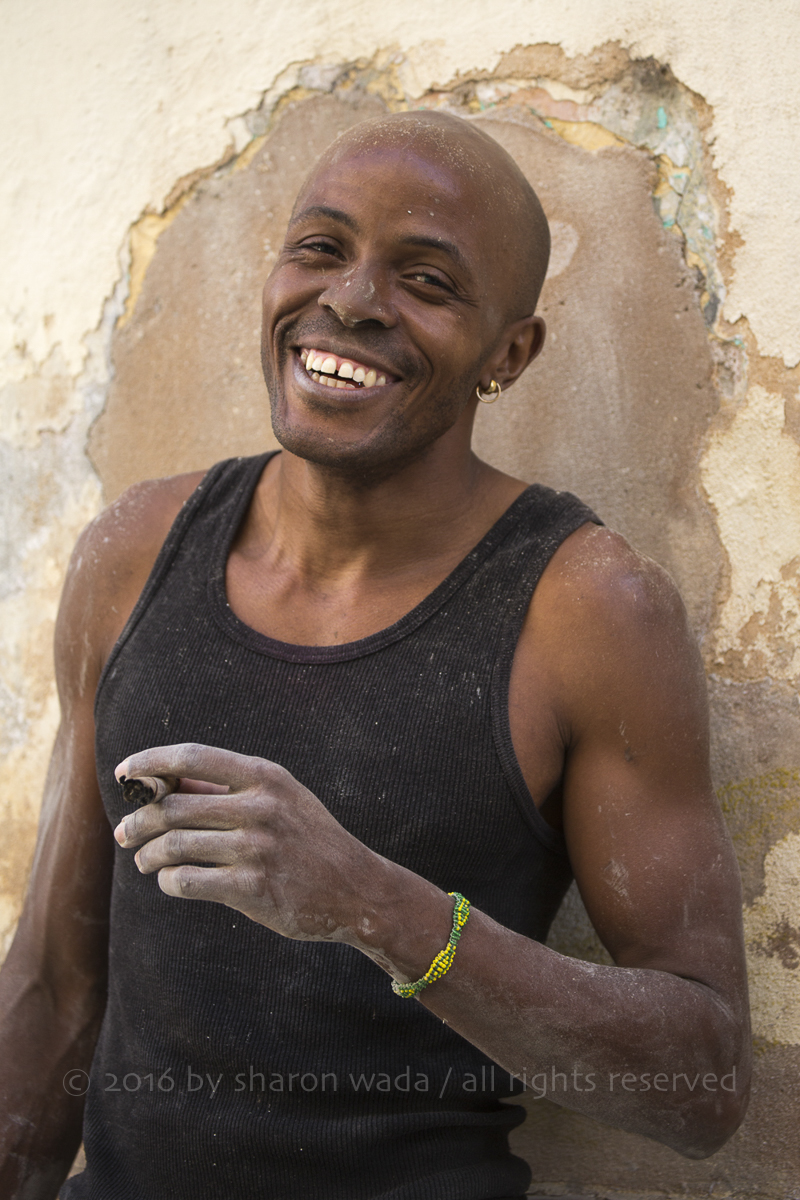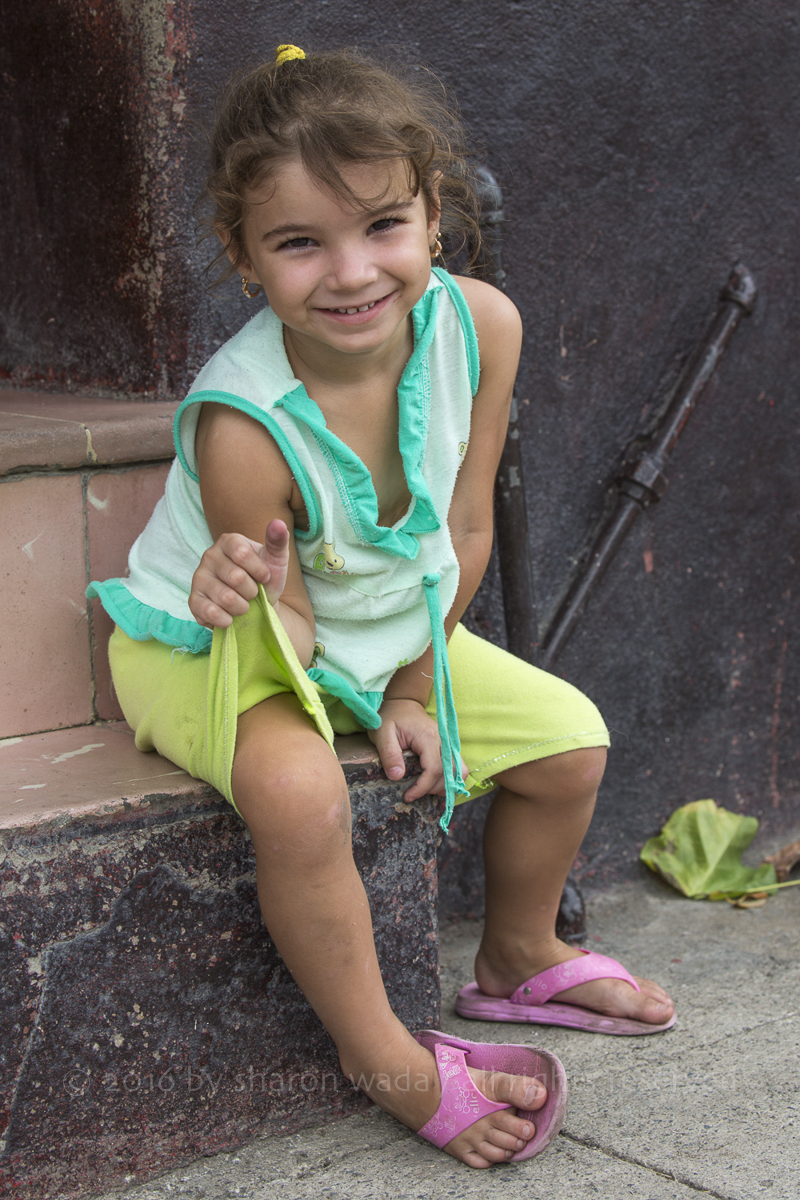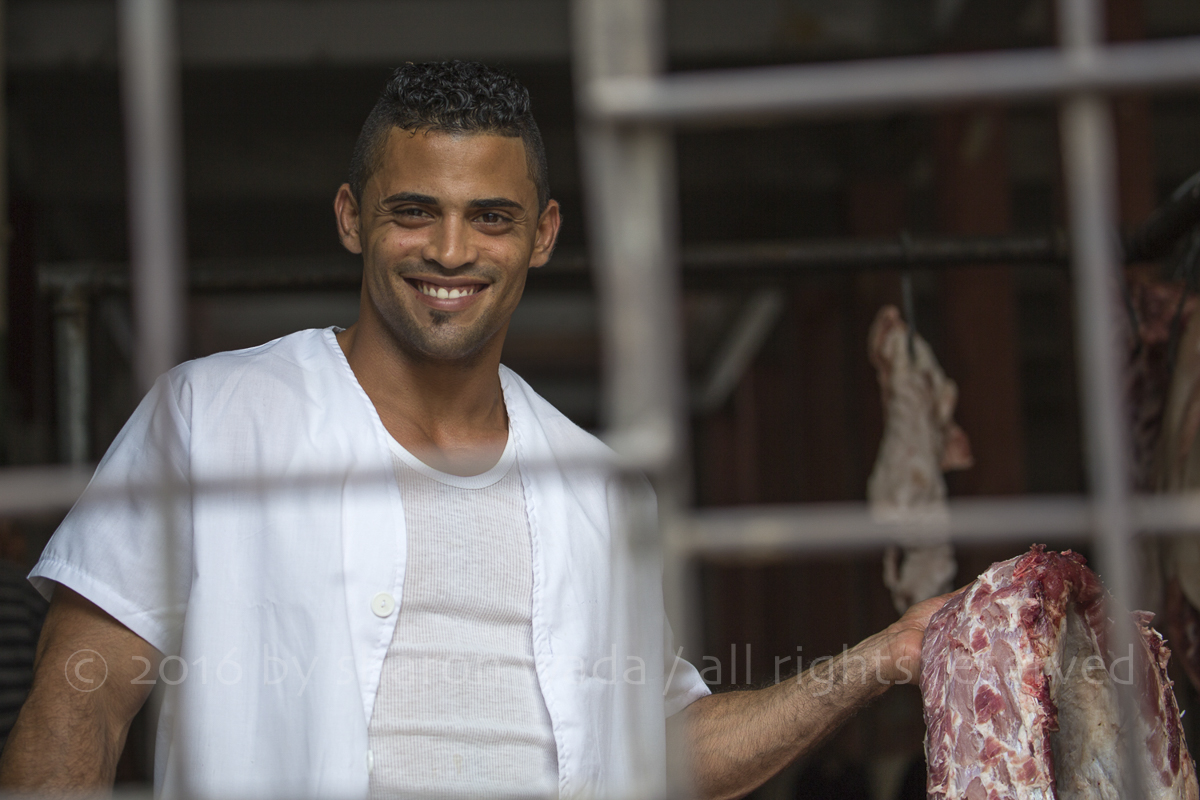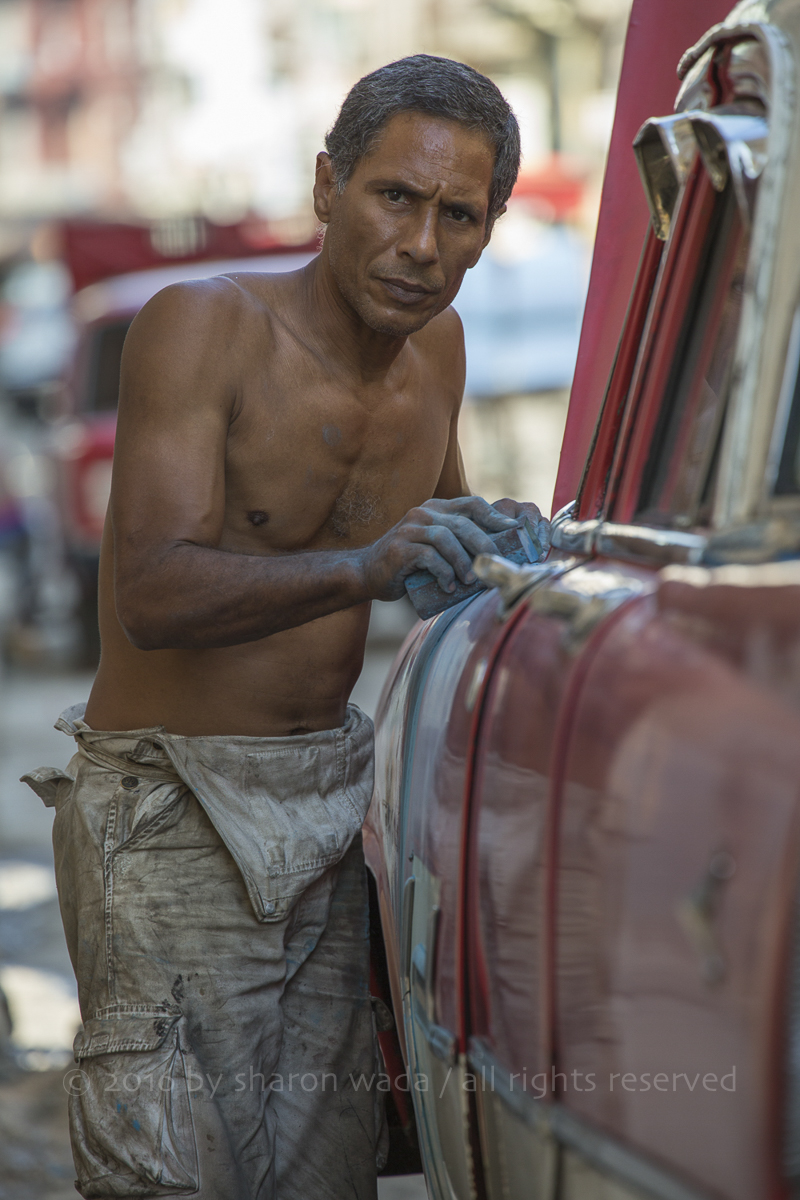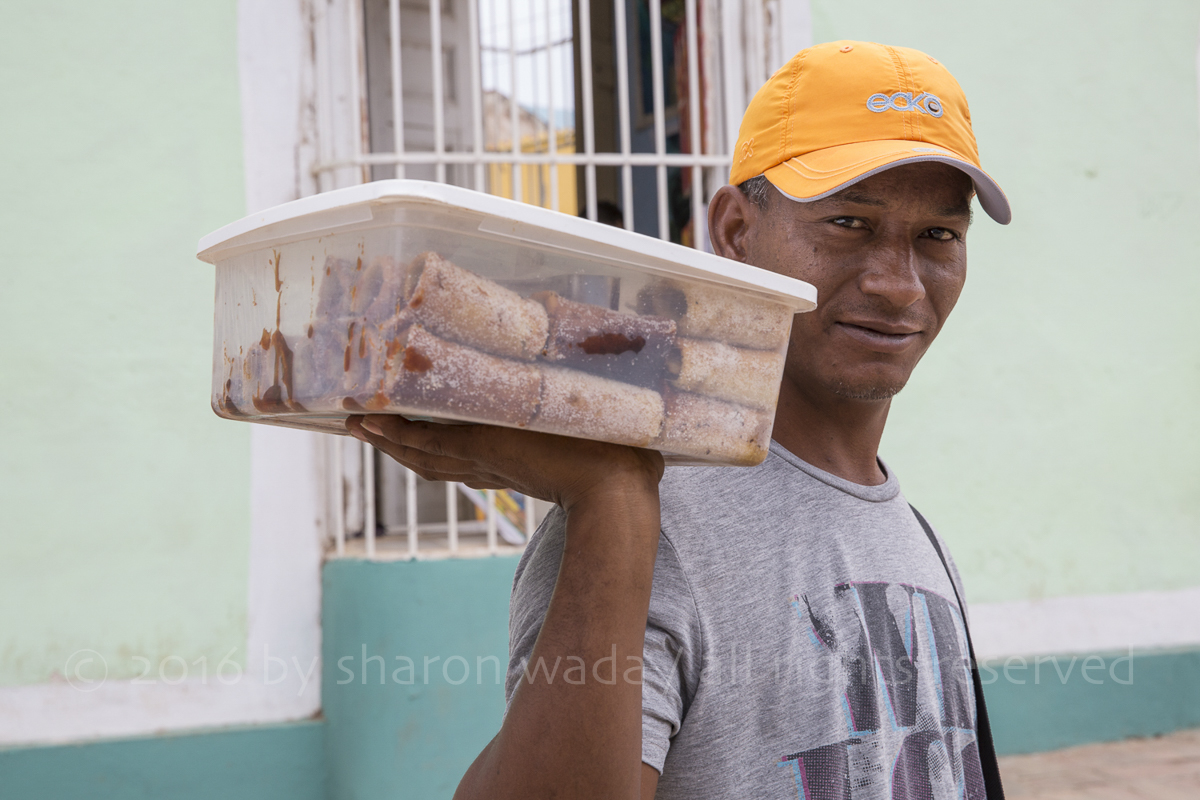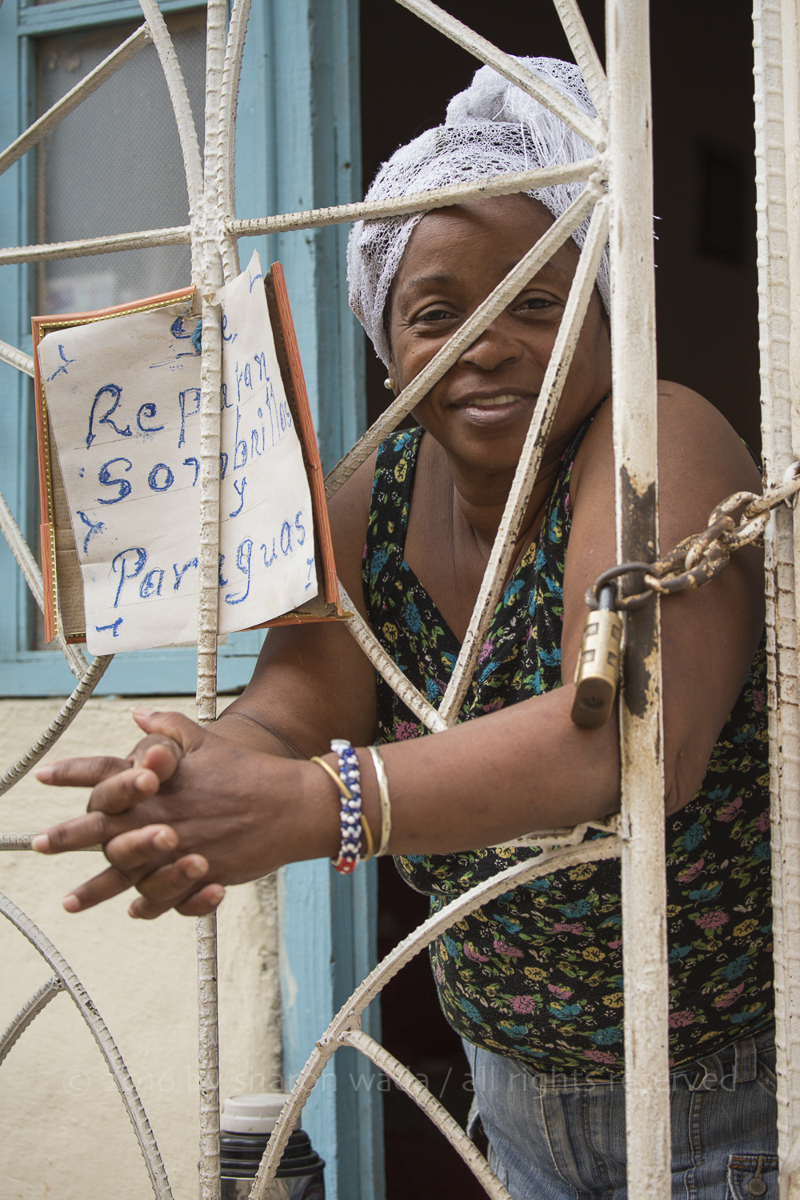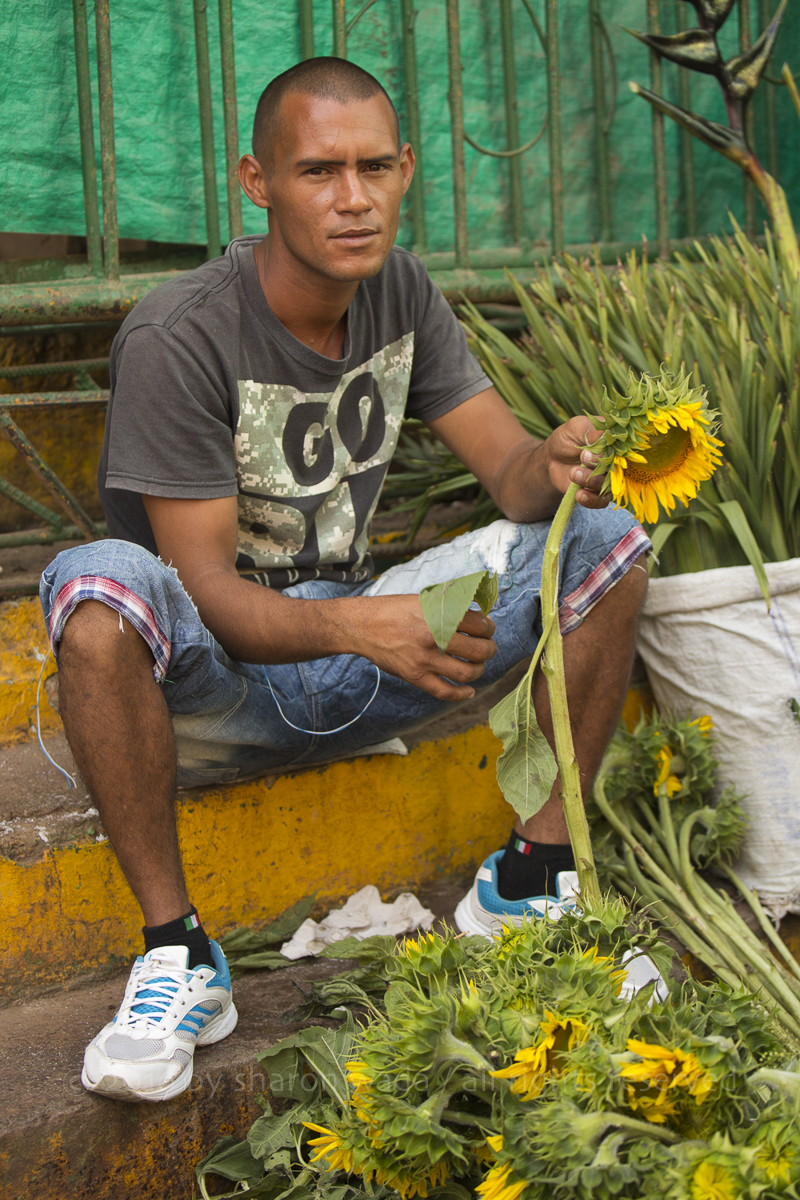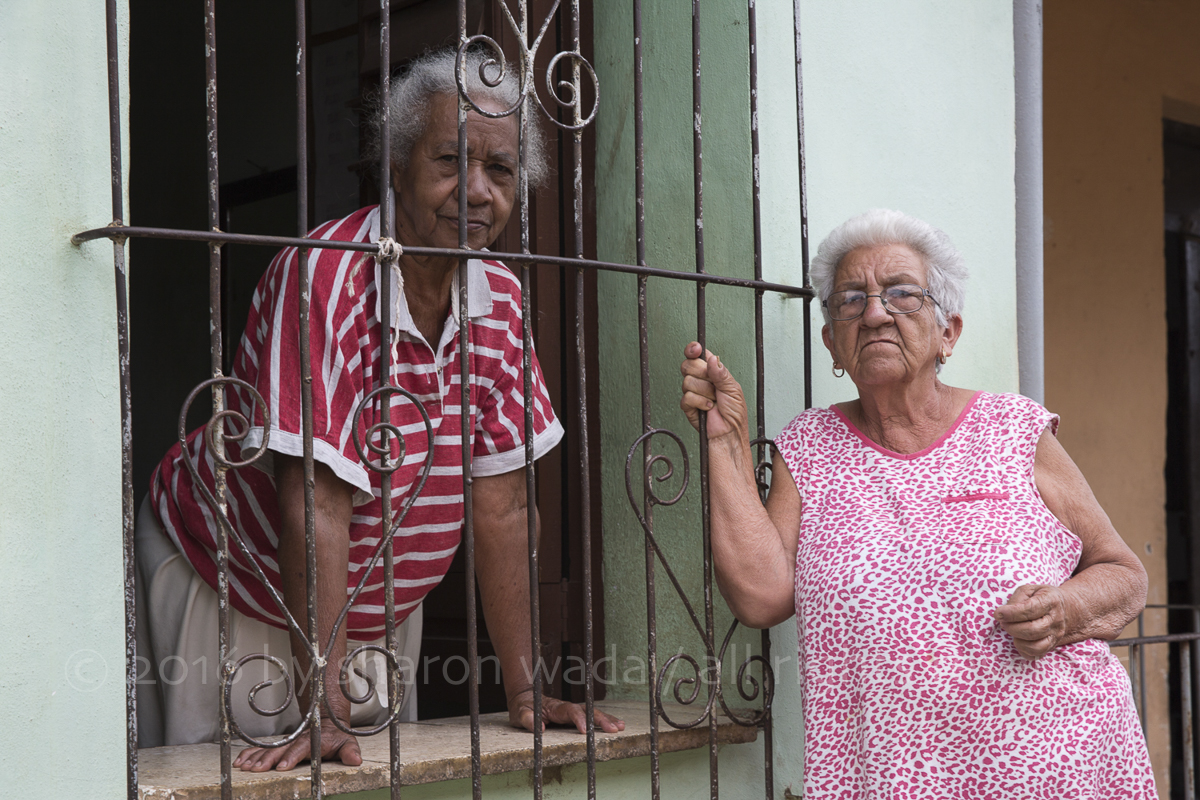Street Photography: A Confidence Test
Midway through my Cuban adventure with Ron Herman (Foothills College photography professor and fotógrafo extraordinario), I found the backbone to not only take the candid shot but to also relate more openly to the people that I encountered on the street. The image captured on the right reflects a completely different persona than the side view on the left and I was surprised how profound and sudden his transformation. I call this duo "Break time, Habana style."
One has to be quick with street photograph; the man in the image above smoking his cigar while looking up at his buddy on a scaffolding existed for just a few seconds before he finished his drag and dropped his arm down. Luckily I caught him mid puff. After grabbing a few frames with my 24-70mm Canon zoom, I walked in front of him and smiled. I motioned to my camera and asked "OK?" His buddy shouted something down to him in Spanish and he laughed. Through this simple exchange, the man's face came alive and he showed a bit of his personality framed by the peeling stucco of the building behind him.
When I look back, I can remember three reasons why I changed my approach to photographing people on the street.
1) On our charter flight from Miami to Habana, Ron said to me that he loves getting full frontal with people to draw them out through their eyes. When I asked how close, he said sometimes within a few feet. This was such a radical concept at the time but it planted a seed within my psyche; that it's possible to get right up in people's faces without scaring or offending them. It also pointed out the concept of connection and how that impacts the image. For someone who loves the idea of photographing people but finds it safer to focus on wide angle landscapes and wild animals 400mm away, this was extreme photography 101.
2) A few days into our journey, a young Cuban photography student stopped by our hotel lobby before one of our informal Habana strolls. He was going to escort us into nearby neighborhoods and possibly into people's homes. To prep us, he suggested ways to carry ourselves on the street with our cameras and explained how our body language projected our intentions including our interest and respect for the person; it is this sense of purpose that people respond to. Clearly, this 19-year old kid had more poise and comfort interacting with strangers than myself and most adults my age in the U.S.! What he said was very practical and it helped me to feel like I belonged in Habana as a tourist and that it was natural to cross paths and capture images of those who lived there.
3) Having used the passive shot-from-afar approach for several days, I started to notice a void in my photographs; that while these portraits made for some nice perspectives, they also conveyed detachment of the subject and lacked impact. In order to create more energy and depth, I decided to close the distance. One morning I replaced my 70-300mm zoom with my 24-70mm and never switched back. What I noticed was that being up front with the subject gave them a choice. They could wave their hand or turn away if they didn't want to participate. But most people stood proudly as if to say "bring it on!" This was such a gift! And what I also discovered was that by looking into their eyes, I could better capture the essence of these incredible people.
The photographs below have become some of my favorites from this trip because they remind me not only of the power of engagement but also of the spirit and resourcefulness of Cuban people; they spend a good part of their day on their stoops or the streets where a lively stream of conversation and culture flows continuously.
These are the kinds of images that I connect with the most . . .

